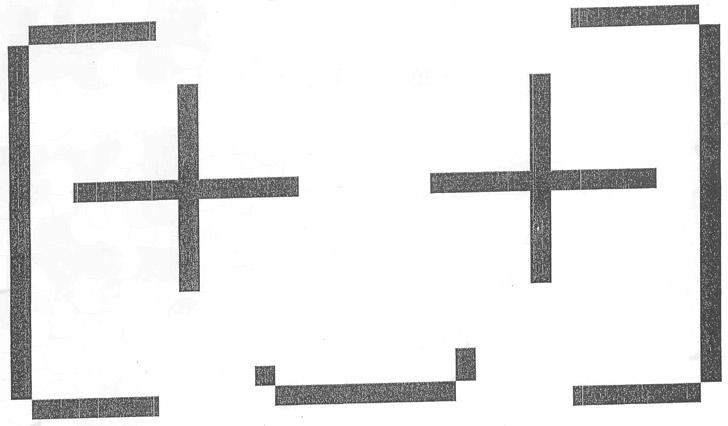Digital Discipline: Minimalism in House and Techno. II
Published in Christoph Cox and Daniel Warner, Audio Culture: Readings In Modern Music, 2004
techno’s origins are best documented in Xeroxed fanzines which were seldom archived, making any definitive research difficult. As early as 1992, though, Simon Reynolds was referring to the work of Detroit techno pioneers like Derrick May as “elegantly minimalist,” in contrast to the rough-and-tumble productions of the UK’s breakbeat ‘ardkore movement. 1 Also in 1992, a user on the rec.music.reviews newsgroup, archived by Google, can be found referring to “minimal bleep style,” and by 1993 a poster to the alt.rave newsgroup, attempting to make some sense of electronic dance music’s proliferation of subgenres, uses “minimal techno” to describe the work of both Detroit’s Carl Craig and Finland’s S=8Akh=9A label.
found everywhere from projects like Minimal Man to labels like the economically titled Minimal Records. Minimalism has become so entrenched that it’s invoked reflexively, if erroneously: Germany’s Areal label, which more than any other techno imprint is pioneering a fattened-up return to song-form, albeit within the context of repetitive dance floor tracks, goes by the motto, “Advanced Tech-Electronic Minimalism.”
Robert Hood – The Pace (from Minimal Nation EP)
just as punk rock was driven by a harder/faster/louder impulse that hurtled perpetually toward its final limit (a limit one could argue was reached with grindcore’s double-bass-drum pummel, where the speeds reached seemed to blur into a paradoxical stasis), early 90s Detroit techno took the repetitive tropes of machine funk (whether Kraftwerk or Giorgio Moroder) and cut away everything but the grinding rhythms. Given the racial politics of Detroit techno, in which a coterie of mostly black musicians attempted to create an entirely new form of African-American expression, the link to African drumming and its emphasis on polyrhythms can’t be ignored. (Perhaps it’s no accident that Reich himself studied drumming in Ghana; classic minimalism, after all, took its cues from African, and not Western, musical traditions when it privileged rhythm and repetition over melody and linear progression.) Richie Hawtin’s “Afrika,” for example – though by a white artist, it falls squarely within the tradition being developed by African-American artists in the early 90s – makes the explicit connection between techno’s minimalistic programming and African percussion.
Minimalism also proved a reaction to certain developments within techno. In the UK in the early ’90s, many of the most popular tunes came from a burgeoning style called “hardcore” (or “‘ardkore”) which emphasized messy excess: cartoony sound effects, goofy sampladelia, and the kind of cultural cross-references that delighted bug-eyed ravers wearing Mickey Mouse gloves. Minimalism’s tasteful restraint offered an alternate, and even polemical, position for aesthetes in search of a more refined brand of “intelligent dance music.”
Steve Reich’s “Come Out” and “It’s Gonna Rain” are both dependent upon the medium of magnetic tape, which, as the practicioners of musique concrete had demonstrated, proved itself to be a form of musical material in its own right for the ways in which it could be spliced, looped, and delayed. Likewise, early acid house productions like Phuture’s “Acid Tracks” reduced the disco/house form to hitherto unimagined proportions by using the Roland TB-303 bass machine to strip down the track to the most basic of elements: kick drum, cowbell, hand clap, whistle, and the grinding, oscillating bass line that became the signature of the acid sound.
The software itself is developed to facilitate the production of minimalistic constructions as opposed to more song-based structures.
given that musicians are increasingly working as software programmers: one of Ableton’s head designers, for instance, is Robert Henke, a pioneer of German minimal techno who records under the name of Monolake. With musicians increasingly developing their own software tools, a sort of feedback loop occurs whereby the predominant stylistics engender tools designed specifically to further them.)
Whatever repetition’s psychological aspects, they are filtered through the body; as any dancer knows, repetition creates a unique sort of corporeal experience wherein the body becomes as if inhabited by the beat. The common practice within house and techno parties of sustaining an almost unvarying tempo for the duration of the night has the effect – at least ideally – of uniting dancers through the beat, as if joining them into a kind of “desiring machine” ruled by a single pulse. But whereas other minimalist genres like hip hop or dancehall reggae have used looping productions as a backdrop for lyrical virtuosity, minimal techno corkscrews into the very heart of repetition.
(To be continued)
Posted in academia on October 4th, 2008 by fresh good minimal | 3 Comments




 gmail
gmail com
com
